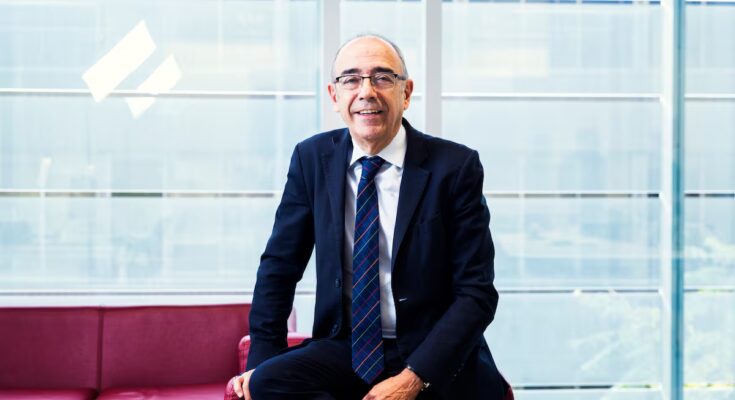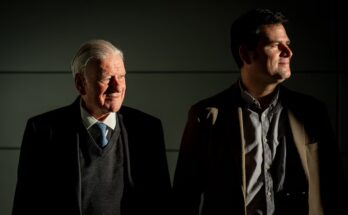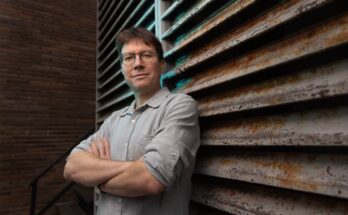José Manuel Fernández de Labastida (Madrid, 67 years old) is a theoretical physicist specializing in supergravity, supersymmetry, string theory and quantum topological field theories. They are some of the most advanced proposals to try to explain the foundations of the universe, and he worked on them in academic temples such as the Princeton Institute for Advanced Studies (where Albert Einstein was also) and the European Laboratory for Particle Physics (CERN). Since the 2000s, the researcher has made a change in his career. He focused on science management, where he held important political positions, first in the government of José María Aznar, then in that of José Luis Rodríguez Zapatero, and since 2011, in the European Research Council, an institution that distributes the most prestigious scholarships for EU scientists.
Since April, Fernández de Labastida has returned to Spain to head the State Research Agency, the state’s pillar of scientific research funding. This entity, which has around 200 employees and a network of collaborators of around 35,000 scientists spread across the national territory, celebrates its first 10 years of life this week. The Agency was created so that Spain would have an entity comparable to other European countries, and one of its main objectives is to obtain greater recognition at an international level, explains Fernández de Labastida in an interview with EL PAÍS in which he outlines the major challenges still open to the entity and, therefore, to scientific research in Spain.
A priority task for Fernández de Labastida is to advance in the “simplification” of the procedures for accessing public funds for scientists. The manager assures that a lot has been done in this field thanks to the Agiliza plan, launched in 2024, and that it should resolve the Kafkaesque situation in which the scientific community found itself a few years ago when it had the funds, but could not even buy the chairs due to the bureaucratic labyrinth. Of course, the researchers perhaps “have not yet seen many effects because the calls require up to three years to be developed”, recognizes the head of the Agency. But he adds that his goal is to bring Spain closer to the EU model, which provides flat-rate funding (based on results, not costs), which would make researchers’ lives easier than ever before. Fernández de Labastida explains it like this: “There is a rigorous evaluation and selection process, but once I decide to give you help, then I will ask you to tell me if you have achieved the goals you set for yourself, but I will not ask you for details on how you spent the last euros.” “I would like to take a step in this direction and I will do everything to make this happen, but to do so we must change the law on subsidies, which does not depend only on us,” he warns.
The Spanish scientific system records historic spending levels. The question is whether this level can be maintained when, starting next year, funding from the European Union begins to decline, which has been essential for the public sector to reach unprecedented levels of funding. Fernández de Labastida assures that there will be no cuts. “At the moment we have maintained the budget this year, even though we have had practically no European funds and we hope to be able to continue to maintain it this way in 2026,” he underlines.
From each to the near future, Spain finds itself facing a crucial debate: whether or not to accept the opening of the research budget to issues of dual use, i.e. civil and military. Fernández de Labastida explains that the same debate is also taking place in Europe, which is planning the next 2028-2034 budgets. At a time when Europe needs to rearm and be more independent from the United States, scientific accounts will reflect this movement, as they will include civil and defense research projects in the same package. Spain seeks to always be aligned with Europe, reasons Fernández de Labastida, and here the debate will begin from 2026, when the country will begin to develop its state research strategy for the same period 2028-2034. “I think we’ll probably move in the same direction,” he says, adding that he hopes this will be well received. “I don’t believe that the scientific community lives isolated from what happens in the world. It’s true that there is a part that must advance in knowledge itself, but scientific work is also advancing in that knowledge for the improvement of society, of the economy, of better social well-being, and in all this there is also an ingredient of technological strategic autonomy and defense. All this is permeating the scientific community, so I don’t expect a visceral reaction from them” against it, he reasons.
The director of the state agency also talks about the problem of scientific fraud and rigged study factories. One of the bloodiest cases in recent history is that of the current rector of the University of Salamanca, Juan Manuel Corchado, whose negligent behavior was denounced by EL PAÍS and who was therefore suspended by the State Investigation Agency as an evaluator. “As far as I know, there is no other evaluator suspended,” says Fernández de Labastida, noting that his organization has around 200 scientific collaborators and a bank of around 35,000 researchers who support the agency as evaluators. Corchado gives “a bad image of the country”, he acknowledges, “but fortunately the cases are very few”. The director believes that his organization is protected against practices such as that of the rector of Salamanca. “We are quite protected because we use the DORA system to evaluate research, which is based on real observation of the scientific production that the researcher has had, not being guided by bibliometric indicators. What we ask the candidate to evaluate his CV is to tell us what his ten best contributions are and to explain why. All the agencies in the world are going in this same direction so as not to be blinded by indicators that mean nothing for individual researchers”, he specifies.
The director of the Agency also appears concerned about the extreme situation of some Spanish public universities. He says he has met with the rectors of public campuses and hopes to do so with regional councilors to “go hand in hand” and see what the agency can do to support the most affected centers. Fernández de Labastida also addresses from his point of view the growing number of private universities, which, he acknowledges, do almost no scientific research. The amount of the agency’s total budget that private universities take for research – more than 1.2 billion euros – is “testamentary”, he points out. “I invite private universities to do research. It has an initial cost, but if it is done well it can also attract a lot of resources. In Europe there are private universities that invest a lot. I don’t know why they don’t do it here”, he explains.
The first time that Fernández de Labastida accepted “Spain’s call” was in 2001, when he placed himself under the orders of the then Secretary of State for Science and Technology, Ramón Marimón, in the government of José María Aznar. Marimón was one of the creators of the Ramón y Cajal program, explains Labastida, to prevent the escape of doctoral students from Spain and give them the job stability they lacked. The program has just turned a quarter century and has benefited around 8,000 researchers, he points out. One of Labastida’s new goals is to modify these contracts to include additional funding associated with a specific research project proposed by the candidate. This can encourage the creation of their own research group and, above all, serve as leverage so that they can in turn obtain funding from the European Union, in particular from the European Research Council, where Spain is still below the level it deserves, explains Labastida. “We are at a 6% return, when our contribution to the budget is significantly higher,” he points out.
The AEI director also aspires to consolidate equality and diversity with his second plan on these issues. “Women’s participation in science can still be significantly improved, and this second plan must advance this policy so that they participate more, including so that they have greater leadership in research,” she explains.
And finally, express a dream for the future. “In the next 10 years there will be one or more researchers funded by the agency who will win the highest international recognition, the Nobel Prize. We must work to make this happen and I believe it is possible to achieve it.”



